- Soil researchers have found that a microscopic nematode is vanishing from Antarctica’s Dry Valleys — and they believe it’s because of climate change.
- Scottnema lindsayae thrives in super-arid landscapes where little else can make it, but melting ice makes for a wetter environment that’s unsuitable for this soil dweller and allows its competitors to flourish.
- Researchers are also concerned that as Antarctica warms, it will become increasingly vulnerable to invasive species.
Every Antarctic summer between December and January, a group of biologists heads out into the vast wilderness. They do not look for the giant whales or the emperor penguins that are typically associated with the region. They show no interest in the ice that covers almost the entire continent. Instead, they head to the largest ice-free region of Antarctica and poke around the soil.
While the rest of the world waits for the latest news about melting glaciers, researchers from the McMurdo Dry Valleys Long-Term Ecological Research (MCM LTER) project have been studying tiny animals that live in the Antarctic soil.
But isn’t Antarctica all ice?
“Let’s not forget Antarctica is a whole continent,” says Walter Andriuzzi, a soil scientist and a post-doctoral researcher at Colorado State University.
While ice dominates the continent, it does melt sometimes, creating small pools of water or a few patches of land that house minuscule but hardy life-forms such as microbes, moss and lichen. Indeed, some parts of the Antarctic Peninsula are so free of ice in the summer that two species of flowering plants grow there.
But it is the McMurdo Dry Valleys that draw Andriuzzi and his colleagues. Located across McMurdo Sound from Mount Erebus, the Dry Valleys feature a chain of mountains that are frozen at the peaks, but whose valleys form about 4,800 square kilometers (1,850 square miles) of land that’s ice-free all year round. Here, water is restricted to some of the most saline frozen lakes in the world and ephemeral streams from melting ice during the two months of summer; the higher elevations are so hostile that scientists have compared them to the surface of Mars. The rest is really just a very, very cold desert.
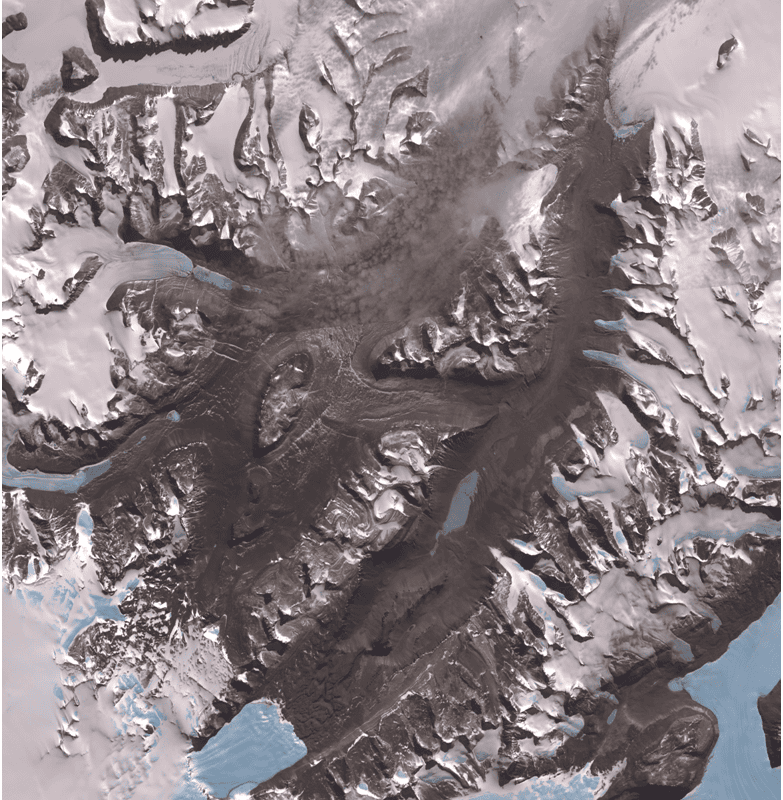
Yet tiny microscopic animals, each interesting in its own way, have managed to adapt to this extreme environment. These include rotifers, tardigrades (or water bears) and Andriuzzi’s speciality, nematodes, or roundworms. But change is coming: a new study by Andriuzzi and colleagues finds that increasing warming due to climate change may be overturning Antarctica’s nematode populations.
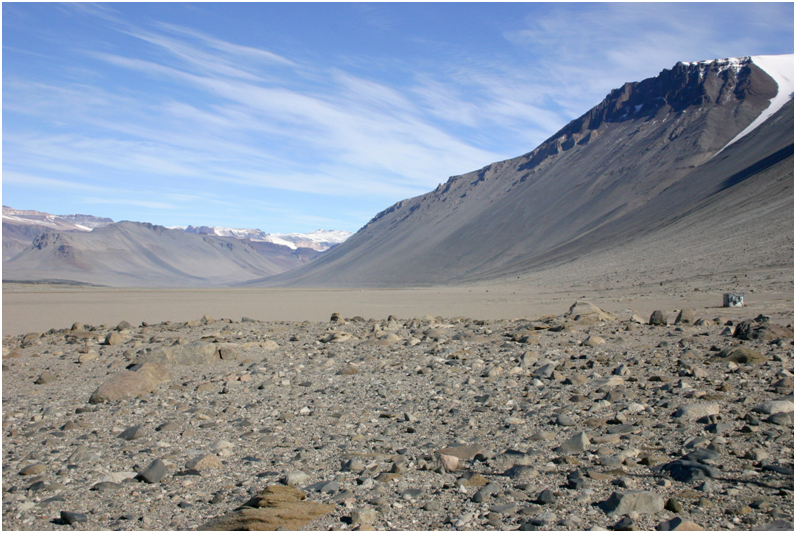
Humans are most familiar with the parasitic kinds of nematodes such as hookworms, but nematodes are actually one of the most diverse animal groups in the world, with over 40,000 species described so far. They are found on land and water, and can eat a range of things including algae, microbes and fecal matter. Whatever the diet, most species play an important role in adding and removing nutrients from the soil and sea floor. Most are a few millimeters long, but some, like those in Antarctica, can only be viewed under a microscope.
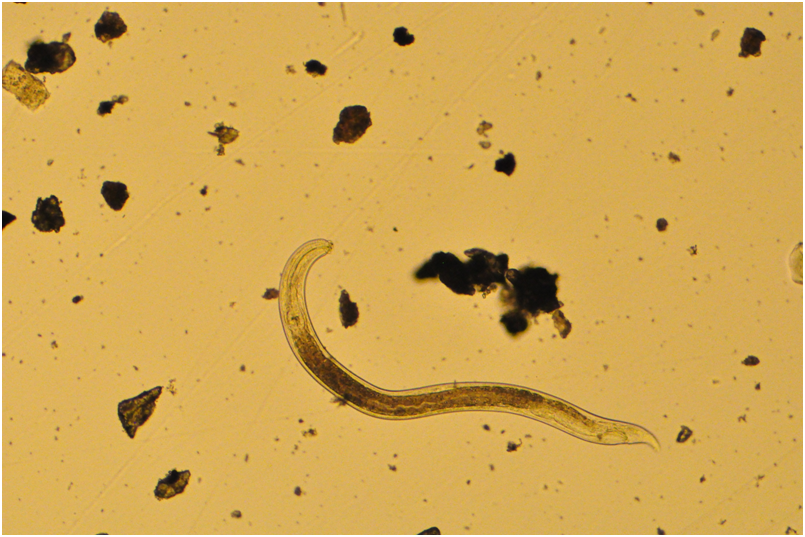
The soils and surrounding waters of the Dry Valleys are home to three known species of nematodes. Eudorylaimus antarcticus is found in streams and occasionally in the soils close to water. This species is possibly the only predatory nematode in the landscape. Plectus murrayi is found exclusively in water and feeds on microbes. And finally, Scottnema lindsayae, also a microbe feeder, is Andriuzzi’s favorite nematode.
All of these species survive the 10 months of extreme cold before the short summer thaws the streams thanks to anhydrobiosis — a process Andriuzzi calls a metabolic marvel. When all liquid water freezes in the Antarctic, these animals enter a state of dehydration and remain like that until water becomes available again.
But S. lindsayae is able to survive in even less water than the other species, because it can remain dehydrated for longer and will very quickly come alive if even a little water is available. This allows the nematode to survive in soils further away from the lakes and streambeds, in the driest parts of the Dry Valleys.
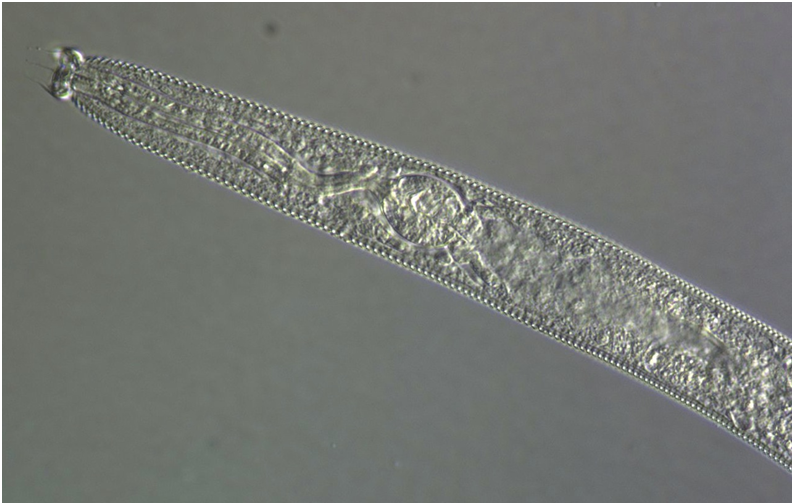
“This ability to quickly exploit transient favorable conditions gives it an important advantage over other species,” Andriuzzi says.
But this advantage may not last if the continent keeps warming. Andriuzzi and his team of soil scientists, who jokingly refer to themselves as worm herders, have been monitoring soil animals from three of the Dry Valleys for years (Taylor, Miers and Garwood valleys) and collecting information on temperature cycles and soil moisture in the region, coinciding with a period of warming in the Dry Valleys since 2001.
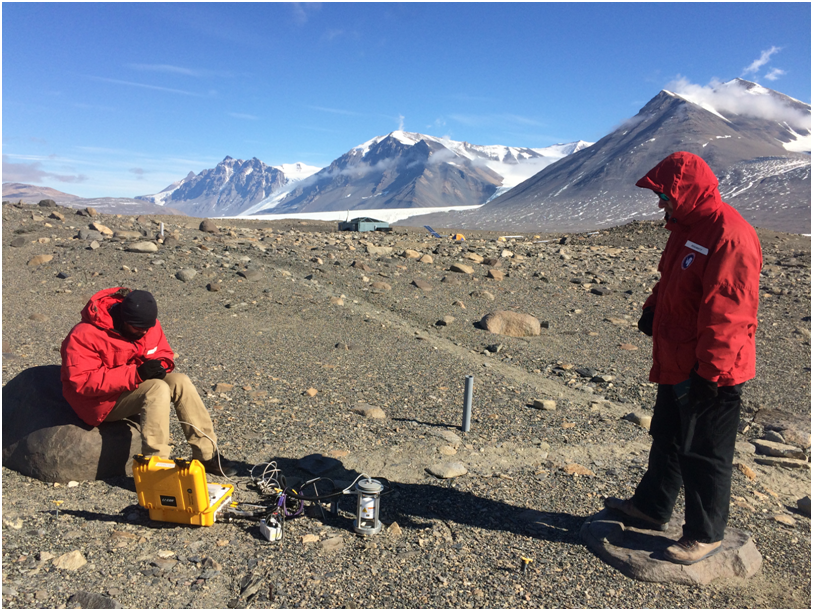
Cycles of cooling and warming are common to the Antarctic, but with climate change Andriuzzi believes that warming events are potentially becoming more frequent and lasting longer.
These warming events appeared to be causing a population decline of the mighty S. lindsayae. Frequent or extended warming can lead to ice thawing faster and more water becoming available. This is great for the rotifers, tardigrades and other nematodes in the landscape, but not for S. lindsayae. For a nematode perfectly suited to survive in this arid habit, too much moisture is kryptonite.
With water now creeping into the dry soils, Andriuzzi says several things might be going wrong for these roundworms. For one, the salts in the soil could dissolve in the water and come in contact with the animals, drawing out any fluids through their cell walls, leading to what is called osmotic shock.
Where water levels have increased, the water-dwelling P. murrayi might also have moved in to compete with S. lindsayae for their shared prey, microbes.
An additional threat could come from the predatory nematode E. antarcticus, which the researchers speculate may be feeding on juvenile S. lindsayae.
“The superior ability of Scottnema lindsayae to go in anhydrobiosis probably comes at some cost, and in fact we know that it has an unusually slow life cycle for a nematode,” Andriuzzi says. Essentially, the nematode might not be able to recover if its population takes a hit.
A separate study by a graduate student from the same lab, Ashley Shaw, found that E. antarcticus was very likely to occupy the top spot in the Dry Valleys’ soil food chain. The only thing protecting S. lindsayae from this voracious predator is the very dry soil, but the melting ice could change that.

Overall, the spread of moisture in the landscape could mean that creatures now restricted to the streams and lakebeds could gain more ground, leading to greater diversity in the soils of the Dry Valleys. This sounds like a good thing, but Andriuzzi says the newcomers are not increasing in abundance nearly as fast as S. lindsayae is declining.
“It’s as if a garden that used to have only daisies is starting to have a few daffodils and dandelions, but also many bare patches,” he says.
Antarctica has been of interest to terrestrial biologists for a long time, particularly in the context of climate change.
“There are very good scientific reasons for studying change in Antarctic terrestrial ecosystems,” says Peter Convey, a terrestrial biologist with the British Antarctic Society, who is not connected with the nematode study.
Convey says the terrestrial ecosystems of the Antarctic have the same components, but in a simpler form, as the temperate or tropical ones that people are more familiar with. That makes it easier to understand how they respond to changes in temperature and precipitation.
“If we can understand where in their structure polar terrestrial ecosystems are sensitive, we can hope to transfer this knowledge and see if it applies in the same way in more complex systems,” he says.
But in a world with rising extinction rates, could one tiny soil dweller losing ground be so bad?
Diana Wall, a professor at Colorado State University and head of this research project in the Dry Valleys, emphasizes the importance of the soil animals. She says creatures like nematodes are a main part of the soil food web. Andriuzzi says previous studies have shown that in low-diversity soil ecosystems, a decline in the dominant soil animals can lead to changes in the carbon cycling.
And then there is the possibility of other outcomes, such as the arrival of invasive species, already a concern in some other parts of the Antarctic. Invasive animals or plants could arrive “attached to footwear, clothing, equipment, rucksacks, camera bags, cargo, vehicles,” Convey says.
A warmer, wetter Antarctica will also make invasive species’ survival more likely.
“Remember that we’re talking of communities with only a handful of species of animals,” Andriuzzi says, “so even the arrival of a single new one — or the disappearance of a resident one — could have big implications.”
CITATIONS
Andriuzzi, W. S., Adams, B. J., Barrett, J. E., Virginia, R. A., & Wall, D. H. (2018). Observed trends of soil fauna in the Antarctic Dry Valleys: early signs of shifts predicted under climate change. Ecology.
Shaw, E. A., Adams, B. J., Barrett, J. E., Lyons, W. B., Virginia, R. A., & Wall, D. H. (2018). Stable C and N isotope ratios reveal soil food web structure and identify the nematode Eudorylaimus antarcticus as an omnivore–predator in Taylor Valley, Antarctica. Polar Biology, 1-6.
Treonis, A. M., & Wall, D. H. (2005). Soil nematodes and desiccation survival in the extreme arid environment of the Antarctic Dry Valleys. Integrative and Comparative Biology, 45(5), 741-750.
Virginia, R. A., & Wall, D. H. (1999). How soils structure communities in the Antarctic Dry Valleys. BioScience, 49(12), 973-983.